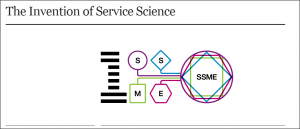My ethical approval has been granted so I now have authorisation to proceed with the research project. The project will be taking place in an organisation that is going through a very turbulent and uncertain time. The organisation is struggling with financial uncertainty and is beginning the process of developing a restructuring strategy.
The strategy will be overseen by a project office and is split into four main strands. The impact of the high uncertainty is that many staff are leaving or have left the organisation. Many posts are now vacant and where replacements are approved these tend to be fixed term interim appointments. The project is concerned with the impact of organisational and technological change on team identity.
The population sample for the research project is four distinct teams that are likely to be some ways. The minimum change will be that the teams will need to work more closely together using a corporate CRM system. The CRM has been implemented and is being used increasingly across the teams. The system allows students to post a query that is routed to the relevant team member. The team member then takes action to resolve the issue or if another member of staff is required to take action the query is re-routed. Once the issues has been resolved the query is closed in the system.
Many issues of interest stem from this scenario such as how people interact with each other in teams that are working at a distance from each other (virtually) and how technological systems act as intermediaries and on occasions as mediators.
For this project I will be looking for situations where technological systems, meetings, papers (non-humans) act as mediators – or things that have agency. There is a lot of discussion in journals about non-humans and whether they have agency or not. The issue is not whether non-humans think through in a conscious way activities that then have an impact on humans – it’s more about how non-human things sometimes do not co-operate within networks and then cause humans to adapt or amen their behaviour.
For example a machine or a computer that operates normally on a daily basis and provides reports or the ability to process data etc. is defined (in terms of Actor-Network Theory) as an intermediary. If the machine breaks down or starts to operate in an unexpected way then the machine is a mediator – or has agency.
The machine has agency because in order to get the machine back on track, working as normal again it might be necessary for the human actor to make a call to a helpdesk in order to call an engineer to come and fix it. This situation is highlighted in the paper by Johnson (1988) where a mechanical door closer breaks down.
Another area of interest is to do wit individual and team identity.

